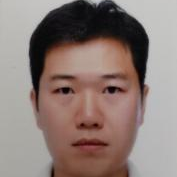Reliability Assessment and Modeling of Optical and Semiconductor Devices
A special issue of Electronics (ISSN 2079-9292). This special issue belongs to the section "Semiconductor Devices".
Deadline for manuscript submissions: closed (1 March 2022) | Viewed by 31141
Special Issue Editors
Interests: reliability assessment and modeling of optical and semiconductor devices; modeling and simulation of semiconductor devices using TCAD; compact modeling for semiconductor devices for process development kit (PDK); semiconductor process/equipment diagnosis; monitoring and modeling of semiconductor processes and devices for intelligent manufacturing
Interests: characterization and modeling of quantum dot (QD) LDs and LEDs; reliability assessment and modeling of optical devices; instrumentation and measurements of optical characteristics for QD devices
Interests: material design and characterization for electrical and optical devices; modeling and simulation of semiconductor devices using TCAD; device physics and process development for thin film transistors; material development using artificial intelligence
Special Issue Information
Dear Colleagues,
This Special Issue will focus on recent developments in research in optical and semiconductor device reliability, such as reliability assessment, testing, modeling, and failure analysis, for optical and semiconductor devices, including optical sources (LD, LED, VCSEL, etc.), optical detectors (PD, APD, etc.), thin-film transistors (TFT), memory devices (MOSFET, JFET, Flash devices, etc.), and power devices (IGBT, LDMOS, VMOS, etc.). These devices are the key components of either optoelectronic or electronic commercial products, which should exhibit high reliability (or quality) to meet the customer satisfaction. In addition, the goal of this Special Issue is to focus on cross-fertilized communication in the state of the art of reliability of optical and semiconductor devices and provide fundamental understanding of basic phenomena that affect reliability.
Potential authors are welcome to submit their original research papers and review papers on, but not limited to, the following topics:
Reliability assessment and testing of optoelectronic semiconductor devices (LD, LED, PD, etc.);
Reliability assessment and testing of electronic semiconductor devices (TFT, FET, IGBT, etc.);
Reliability modeling and simulation of optoelectronic semiconductor devices;
Reliability modeling and simulation of electronic semiconductor devices;
Reliability methodology and prediction of optoelectronic semiconductor devices;
Reliability methodology and prediction of electronic semiconductor devices;
Failure analysis of optoelectronic semiconductor devices;
Failure analysis of electronic semiconductor devices.
Prof. Dr. Ilgu Yun
Dr. Soon Il Jung
Dr. Chang Eun Kim
Dr. Edward Namkyu Cho
Guest Editors
Manuscript Submission Information
Manuscripts should be submitted online at www.mdpi.com by registering and logging in to this website. Once you are registered, click here to go to the submission form. Manuscripts can be submitted until the deadline. All submissions that pass pre-check are peer-reviewed. Accepted papers will be published continuously in the journal (as soon as accepted) and will be listed together on the special issue website. Research articles, review articles as well as short communications are invited. For planned papers, a title and short abstract (about 100 words) can be sent to the Editorial Office for announcement on this website.
Submitted manuscripts should not have been published previously, nor be under consideration for publication elsewhere (except conference proceedings papers). All manuscripts are thoroughly refereed through a single-blind peer-review process. A guide for authors and other relevant information for submission of manuscripts is available on the Instructions for Authors page. Electronics is an international peer-reviewed open access semimonthly journal published by MDPI.
Please visit the Instructions for Authors page before submitting a manuscript. The Article Processing Charge (APC) for publication in this open access journal is 2400 CHF (Swiss Francs). Submitted papers should be well formatted and use good English. Authors may use MDPI's English editing service prior to publication or during author revisions.
Keywords
- Reliability assessment
- Reliability testing
- reliability modeling and simulation
- Reliability methodology and prediction
- Failure analysis
- Optoelectronic semiconductor devices
- Electronic semiconductor devices.
Benefits of Publishing in a Special Issue
- Ease of navigation: Grouping papers by topic helps scholars navigate broad scope journals more efficiently.
- Greater discoverability: Special Issues support the reach and impact of scientific research. Articles in Special Issues are more discoverable and cited more frequently.
- Expansion of research network: Special Issues facilitate connections among authors, fostering scientific collaborations.
- External promotion: Articles in Special Issues are often promoted through the journal's social media, increasing their visibility.
- e-Book format: Special Issues with more than 10 articles can be published as dedicated e-books, ensuring wide and rapid dissemination.
Further information on MDPI's Special Issue polices can be found here.








